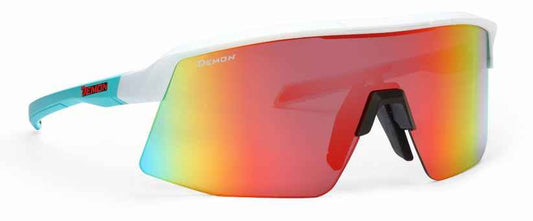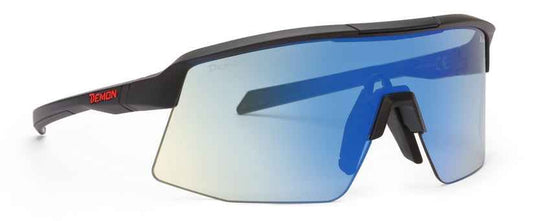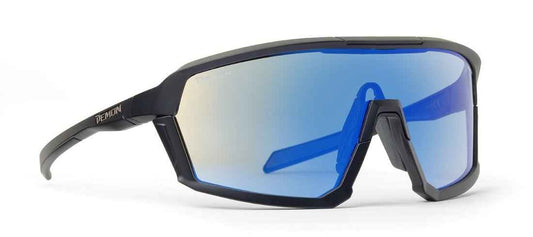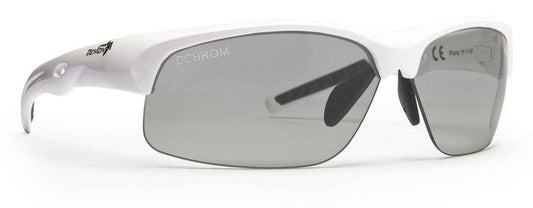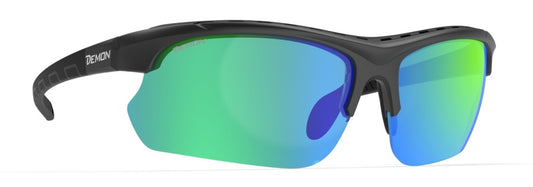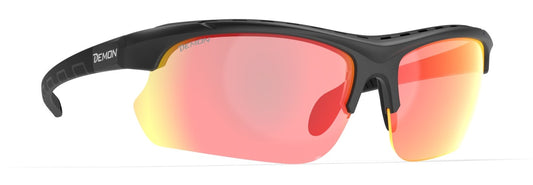-

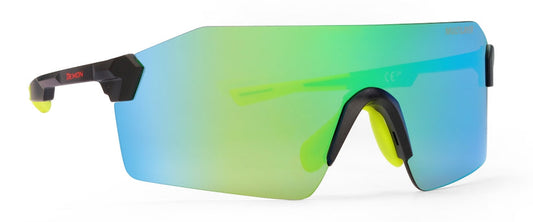 Sale
SaleSUPERPIUMA
Vendor:Running Glasses with High Contrast Mirrored LensRegular price From €71,91Regular priceUnit price / per€79,90Sale price From €71,91Sale -

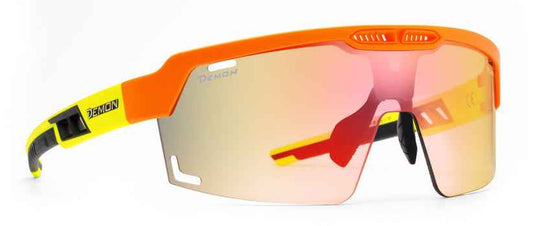 Sale
SaleSPEED VENT
Vendor:Running Glasses with Photochromic Mirrored Lens DCHROM® Cat. 1-3Regular price From €116,91Regular priceUnit price / per€129,90Sale price From €116,91Sale -

 Sale
SaleINFINITE OPTIC
Vendor:Running Glasses with Interchangeable Lenses DCHANGERegular price €63,92Regular priceUnit price / per€79,90Sale price €63,92Sale -
INFINITE OPTIC 2
Vendor:Running Glasses with Mirror LensesRegular price €69,90Regular priceUnit price / per -
INFINITE OPTIC 2
Vendor:Running Glasses with Polarized Mirror LensesRegular price €99,90Regular priceUnit price / per
Collection: Trail Running Sunglasses
Trail Running Sunglasses
Trail running is a highly dynamic and physically demanding sport that takes place primarily in natural environments rather than on standard roads or tracks. These routes often wind through dense forests, traverse rugged mountain paths, cross open plains, roll over hills, or even stretch into desert terrain. While occasional short sections of asphalt may appear, they usually account for less than 20% of the total route. The ever-changing terrain demands constant adaptation, requiring runners to negotiate rocks, roots, streams, uneven ground, and sudden elevation changes.
Because trail running often involves long distances coupled with significant elevation gains and losses, it challenges not only physical endurance but also agility, balance, and coordination. Runners must remain alert and responsive to shifting conditions, from muddy slopes to loose gravel, which makes protective gear essential. Mental fortitude is just as crucial, as trails can be unpredictable, isolated, and mentally taxing, especially on extended runs where navigation and decision-making are critical.
Trail running sunglasses are specifically designed to meet these demands. They protect the eyes from bright sunlight, glare, dust, wind, and debris, all of which are common hazards in natural settings. Unlike standard sunglasses, trail running models often emphasize lightweight construction, secure fit, ventilation, and impact resistance to ensure they stay comfortable and functional even on long, rugged, and fast-paced runs. In addition, many feature interchangeable or photochromic lenses to adapt to changing light conditions, whether dappled forest shade or open mountain sun.
How to Choose Trail Running Sunglasses
Selecting the right pair of trail running sunglasses is more than a style choice—it directly impacts safety, comfort, and performance on the trail. When choosing sunglasses for trail running, several factors should be considered:
Fit and Comfort:
Trail running involves dynamic movements, including quick turns, uphill climbs, and steep descents. Sunglasses should have a snug, secure fit without causing pressure points. Look for adjustable nose pads, flexible temple arms, and rubberized grips to prevent slipping during vigorous activity. A lightweight frame reduces fatigue, especially on long runs.
Ventilation:
Adequate airflow prevents lenses from fogging, particularly during high-intensity efforts or humid conditions. Many trail running models feature vented frames or lenses to maintain clear vision throughout the run.
Durability and Protection:
Trails are unpredictable—rocks, branches, dust, and debris can strike the face at high speed. Sunglasses should be impact-resistant, scratch-resistant, and made from durable materials capable of withstanding extreme conditions.
UV and Eye Protection:
Long-term exposure to sunlight can cause eye strain or damage. Choose sunglasses that block 100% of UVA and UVB rays. Additionally, consider models with wraparound frames or side shields for extra protection from wind, dust, and peripheral glare.
Weight and Portability:
Lightweight sunglasses enhance comfort, reduce bounce, and prevent irritation over long distances. Some trail runners also prefer foldable or compact designs for easy storage when not in use.
Lenses for Trail Running Sunglasses
The lens is arguably the most critical component of trail running sunglasses, as it affects visibility, contrast, and eye protection under changing light conditions. Here’s a breakdown of lens considerations:
Lens Tint and Color:
- Gray/Smoke: Reduces overall brightness without altering colors; ideal for very bright, sunny conditions.
- Brown/Amber: Enhances contrast on uneven terrain, improving depth perception in forests or trails with mixed light.
- Yellow/Gold: Excellent for low-light conditions, early morning, or cloudy days; improves contrast and sharpness.
- Green: Enhances contrast and reduces glare; versatile for mixed conditions.
- Orange/Red: Boosts contrast in overcast or shaded trails, making roots, rocks, and obstacles more visible.
Mirrored Lenses:
Reflect sunlight to reduce glare, particularly useful in snow, water, or bright alpine conditions. They also add an extra layer of eye protection against harsh light.
Photochromic Lenses:
These lenses automatically adjust their tint based on light intensity, making them highly versatile for trails with varying sunlight exposure.
Polarized Lenses:
Polarization reduces glare from reflective surfaces, such as water or wet rocks, and can enhance comfort on sunny days. However, some runners find polarized lenses make it harder to see trail texture in low-light or shaded conditions.
Interchangeable Lenses:
Some trail running sunglasses come with interchangeable lenses, allowing runners to swap colors based on the day’s lighting conditions. This is ideal for multi-day adventures or environments with rapidly changing light.
The Essence of Trail Running
Trail running represents a profound immersion in nature, offering a unique blend of physical exertion, mental engagement, and sensory awareness. Unlike traditional road running or track-based athletics, it takes place on natural trails that can wind through forests, mountains, deserts, plains, or along rivers. These paths are rarely uniform, often featuring rocks, roots, loose soil, and other obstacles that demand full-body engagement. Trail running doesn’t just challenge the legs it recruits the core and upper body, requiring balance, coordination, and agility to navigate technical terrain safely.
From a mental perspective, trail running requires preparation, vigilance, and sound judgment. Unlike city streets, natural trails can be unpredictable; changes in weather, uneven surfaces, and hidden obstacles demand constant attention. Trail runners must be mentally resilient, anticipating potential hazards while maintaining focus on pacing, energy management, and route navigation. While mountainous terrain is often highlighted in discussions of trail running, the essential element is simply a natural, non-urban environment. Even gentle hills, woodland paths, or desert trails can provide the immersive experience that defines the sport.
One of the most distinctive aspects of trail running is the varied elevation encountered along most routes. Uphill and downhill segments require distinct skills and approaches. Ascending trails often necessitate a combination of running and walking, especially on steep or uneven terrain. Trekking poles or other support tools can assist in maintaining balance and reducing strain on the legs during prolonged climbs. Downhill running, conversely, demands precision and control; runners must carefully place each foot and engage their core to absorb impact. Leaning slightly forward and distributing weight toward the forefoot helps maintain stability and reduces the risk of injury.
Trail running is a multidimensional experience that challenges both body and mind. It cultivates endurance, strength, agility, and focus, while also fostering a deep connection with the natural environment. Every run offers new stimuli: the crunch of leaves underfoot, the scent of the forest, the sight of distant peaks, or the feel of wind across open plains. Beyond physical fitness, trail running teaches patience, adaptability, and mindfulness, making it as much a journey of mental exploration as of athletic achievement.

The Benefits of Trail Running
Trail running offers far more than the benefits of a typical workout it is a holistic experience that engages the body, mind, and spirit. Unlike running on city streets or treadmills, trail running allows individuals to break free from the constraints of daily routines and immerse themselves fully in the natural world. Whether winding through dense forests, scaling mountain trails, or crossing open plains, the experience fosters a sense of freedom and connection with the environment that few other sports can replicate.
Physically, trail running provides a highly effective and low-impact form of exercise. Running on dirt paths, forest floors, or grass is significantly gentler on the joints than the repetitive pounding of asphalt or concrete. The softer, uneven surfaces naturally encourage varied movement patterns, engaging stabilizing muscles in the legs, core, and hips that are often underutilized in traditional running. This not only enhances overall strength and balance but also reduces the risk of repetitive stress injuries.
Beyond the joints, trail running promotes cardiovascular fitness, muscular endurance, and agility. The constantly changing terrain steep ascents, rocky paths, and sudden descents—forces the body to adapt dynamically, improving coordination, proprioception (body awareness), and overall athletic performance. Incorporating uphill climbs builds leg strength and power, while controlled downhill running develops balance and enhances eccentric muscle control, which is critical for injury prevention.
Mentally, trail running offers profound benefits as well. The natural surroundings encourage mindfulness, reduce stress, and foster a sense of calm and mental clarity. Unlike the monotony of treadmill running or crowded urban routes, trails provide constantly shifting scenery, stimulating the senses and offering a form of natural therapy. The combination of physical exertion and exposure to nature has been shown to improve mood, boost cognitive function, and cultivate resilience against mental fatigue.
Performance in Trail Running
Trail running can be approached from two complementary perspectives: recreational enjoyment and competitive performance. For many participants, the sport is less about winning races and more about experiencing the sheer joy of running through natural landscapes, feeling the rhythm of their own movement, and immersing themselves in the sights, sounds, and textures of the trail. These runners often prioritize the journey over the destination, embracing varied terrain and distances without the pressure of timing or structured goals. For them, the essence of trail running lies in mindfulness, exploration, and the connection between body and environment.
On the other hand, competitive trail running requires a highly strategic and disciplined approach. Athletes seeking success in races often follow carefully structured training programs designed to optimize endurance, speed, strength, and adaptability to technical terrain. Workouts may include Fartlek sessions for variable-speed conditioning, split training to balance intensity and recovery, and vertical kilometer exercises to build uphill power and efficiency. Technical skill development such as precise foot placement, downhill control, and terrain navigation also plays a central role in maximizing performance and reducing injury risk.
Nutrition is a critical component of performance in trail running, particularly for competitive athletes. Proper fueling strategies must account for energy expenditure, hydration, and electrolyte balance, which can vary significantly based on gender, body composition, and individual metabolic needs. On race days, careful attention to pre-run meals, mid-run snacks, and hydration protocols can make the difference between sustaining energy and facing fatigue or cramping. Even in organized events with safety measures and support stations, the unpredictable nature of trails ensures that runners remain engaged, alert, and adaptive throughout the course.
For recreational runners, the experience often transcends quantifiable metrics like pace or distance. Many choose to leave behind GPS watches and stopwatches, relying instead on intuition, body awareness, and the natural rhythm of the trail. This approach encourages a deeper connection to the environment, fosters mental clarity, and transforms the run into a meditative practice. Every ascent becomes a challenge to savor, every descent an opportunity to test balance and agility, and every twist of the trail a moment to fully inhabit the present.

Trail Running Race Categories
Trail running races are organized into categories based on distance, elevation gain, and overall difficulty. Understanding these classifications helps runners choose events that align with their experience, fitness level, and personal goals.
Trail Races
Trail races generally cover distances shorter than 42 kilometers (approximately the length of a marathon) and are designed to challenge runners with varied terrain, technical trails, and elevation changes. While the distance is moderate, these races often feature significant climbs and descents, with total elevation gains and losses commonly around 3,000 meters. These events demand not only cardiovascular endurance but also agility, balance, and mental focus, as runners navigate uneven paths, rocks, roots, and other natural obstacles. Trail races are an excellent entry point for runners transitioning from road running to off-road adventure, offering a blend of challenge, excitement, and scenic enjoyment.
Ultra Trail Races
Races that exceed the standard marathon distance of 42 kilometers or involve particularly demanding elevation changes are classified as ultra or ultra-trail events. According to the International Trail Running Association (ITRA), ultra-trail races are further subdivided by distance to provide more precise classifications:
- Trail Ultra-Medium (M): 42–69 km
- Trail Ultra-Long (L): 70–99 km
- Trail Ultra-XLong (XL): Over 100 km
Ultra-trail events are characterized by long distances, substantial elevation gains (often 4,000 meters or more), and technical terrain that tests runners’ endurance, navigation skills, and mental resilience. Athletes often need to carefully manage nutrition, hydration, and pacing, as the physical and mental demands of ultra-trail racing extend far beyond standard marathon preparation.
Endurance Trail Races
Some trail running events push the limits of human endurance, surpassing traditional classifications. These endurance trail races cover extreme distances, often approaching or exceeding 200 miles (approximately 320 kilometers), and involve cumulative elevation gains and losses of more than 10,000 meters. Such events are grueling tests of stamina, strategy, and mental toughness, requiring advanced preparation, experience, and often self-sufficiency in remote and challenging terrain. Examples of renowned endurance trail races include:
- Tor des Géants: A legendary multi-day race in Italy’s Aosta Valley, famous for its extreme altitude changes and rugged mountain paths.
- Petite Trotte à Léon (PTL): A demanding team-based adventure through the Alps, emphasizing navigation, endurance, and survival skills over an extended distance.
Trail running races range from short, accessible trails to ultra-endurance challenges that test the limits of human capability. Each category offers a distinct experience, from scenic exploration and technical skill development to extreme physical and mental endurance, allowing runners to find events that suit their level, ambitions, and love of adventure.
The Role of Trail Running Sunglasses
Trail running sunglasses are not merely an accessory—they are an essential piece of equipment that significantly enhances safety, performance, and comfort in the demanding and ever-changing conditions of outdoor trails. Running through forests, mountains, deserts, or open plains exposes the eyes to a variety of environmental hazards, including intense sunlight, glare, dust, wind, debris, and even sudden weather changes. Proper eyewear protects against these elements while improving visual clarity and focus, which is critical when navigating uneven terrain and technical trails.
Key Features of High-Performance Trail Running Sunglasses:
- Mirrored Lenses: These lenses reduce glare and provide superior contrast, making them particularly useful in bright or high-altitude environments. They help runners maintain clear vision even when sunlight reflects off rocks, snow, or water surfaces.
- Lightweight Frames: Trail running often involves long distances and vigorous movement, so lightweight frames reduce fatigue and maintain comfort without compromising stability.
- Secure Fit: A proper fit ensures that sunglasses stay in place during dynamic movements, including jumps, sharp turns, and descents on uneven terrain. Adjustable nose pads and rubberized temple tips often contribute to this secure fit.
- UV Protection: High-quality trail running sunglasses block harmful UVA and UVB rays, reducing eye strain and protecting long-term ocular health during prolonged exposure to sunlight.
- Durability: Trail sunglasses are designed to withstand impacts, scratches, and extreme weather conditions. This ensures that even during high-speed descents or unexpected falls, the glasses remain functional and intact.
Popular Models and Options:
- Orange Neon Mirrored Lens: A vibrant choice that enhances visibility and contrast in bright, sunlit environments, making trail features easier to discern.
- Green Mirrored Lens with Ultralight Frame: Combines lightweight comfort with high-performance optics, ideal for runners seeking a balance between endurance, stability, and visual clarity.
In addition to protection and comfort, trail running sunglasses can improve performance by enhancing depth perception and contrast, allowing runners to quickly identify obstacles such as rocks, roots, or uneven surfaces. They also reduce fatigue by minimizing the need to squint or strain in bright light, helping maintain focus and precision throughout long or technically challenging runs.
Ultimately, trail running sunglasses are a critical element of a runner’s gear, combining safety, performance, and comfort. They empower runners to confidently tackle diverse terrains and changing weather conditions while maintaining peak focus and enjoyment in the natural environment.


